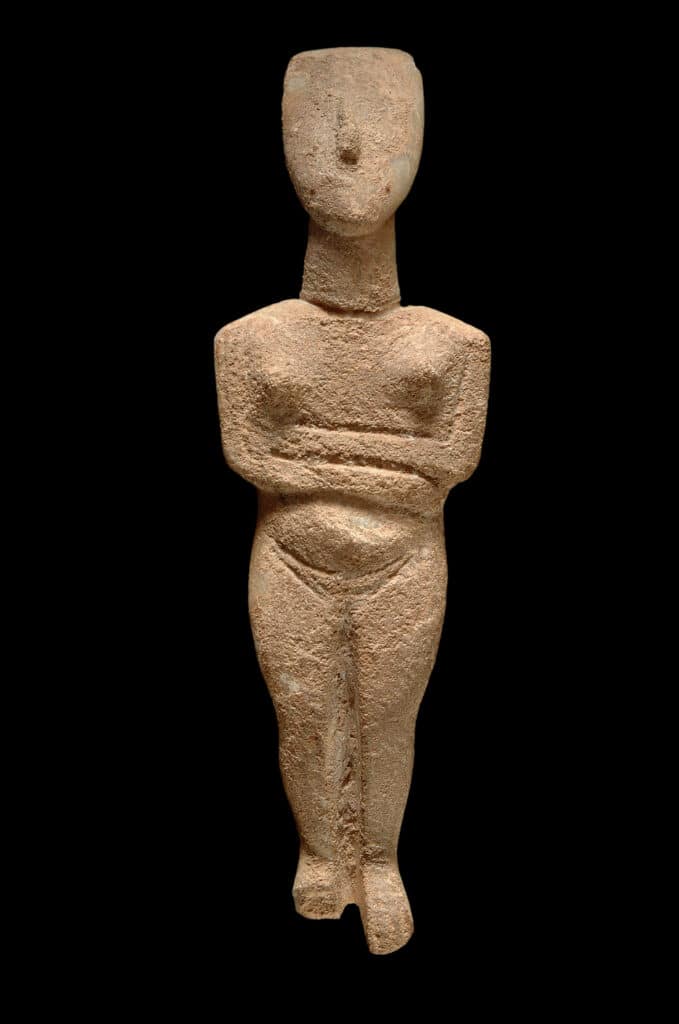In the Early Bronze Age, Aegean societies started making systematic use of metals. The introduction of copper tools, made by hammering and casting, improved the productive capacity of almost all fields of economic activity (farming, tree-felling, architecture, shipbuilding, etc.). At the same time, copper weapons brought about considerable changes in the character of warfare.
These developments affected Aegean societies. Population increased, and major habitation sites gradually turned into proto-urban centers, especially in the NE Aegean (e.g. Troy, Poliochni, Thermi). Maritime traffic intensified, with the Cyclades playing a central role in communications and trade. Arts developed considerably, especially in the areas of metal-working, stone-working and pottery-making. Social relations became more complex and inequalities arose, which are detectable in burials and the furnishing of the dead.
Four major ‘cultures’ are identified in the EBA Aegean: the Early Cycladic culture in the islands of the Cyclades, the Early Minoan culture on Crete, the Early Helladic culture on the Greek mainland, and the Early Bronze Age culture of the Northeast Aegean (including islands and part of the Asia Minor littoral).
After 2400/2300 BC, upheavals are detected throughout the Aegean, which were probably related to population movements, competitions for access to metal sources, abrupt climatic changes etc. A period of instability followed, leading to the eventual disintegration of the economic structure of EBA societies.
| ca. 3500 BC | Ε Earliest cultivation of vine and olive trees in Mainland Greece and the Aegean |
| ca. 3200 BC | Beginning of systematic use of metals in Mainland Greece and the Aegean |
| ca. 2800 BC | Rise of “proto-urban” settlements in the Aegean and Mainland Greece (Poliochni in Lemnos, Thermi in Lesbos, Troy, Manika in Euboea, Skarkos in Ios) |
| ca. 2400 BC | Introduction of the potter’s wheel in the Aegean |
| 2300 – 2000 BC | Period of economic and social upheavals |




